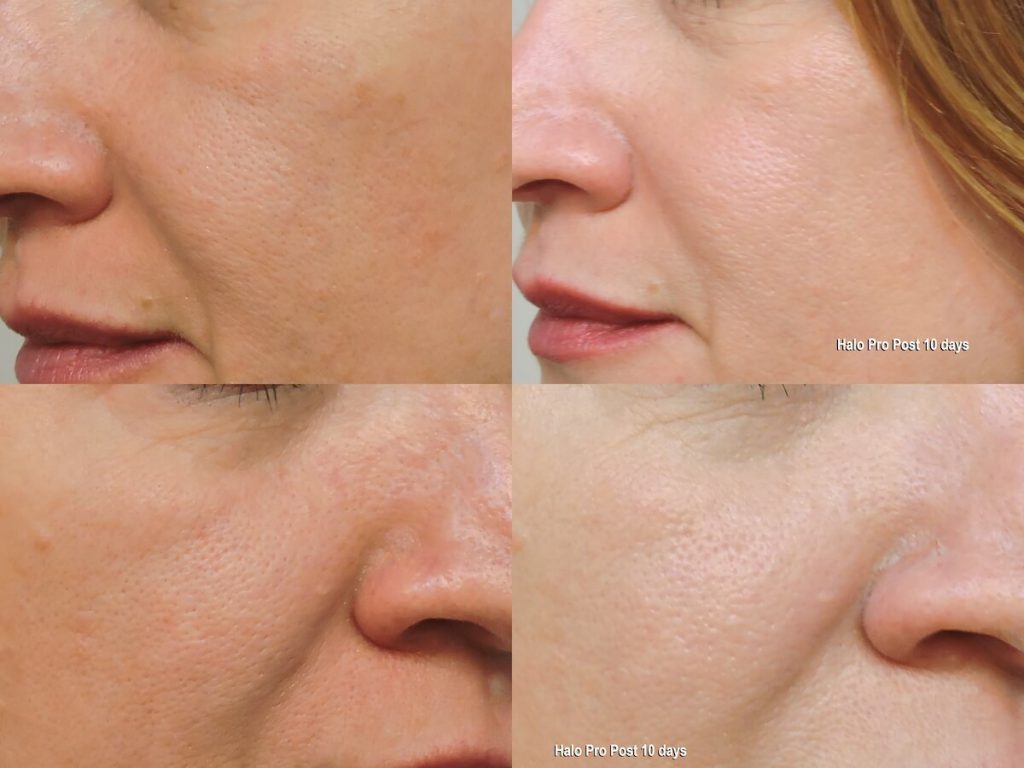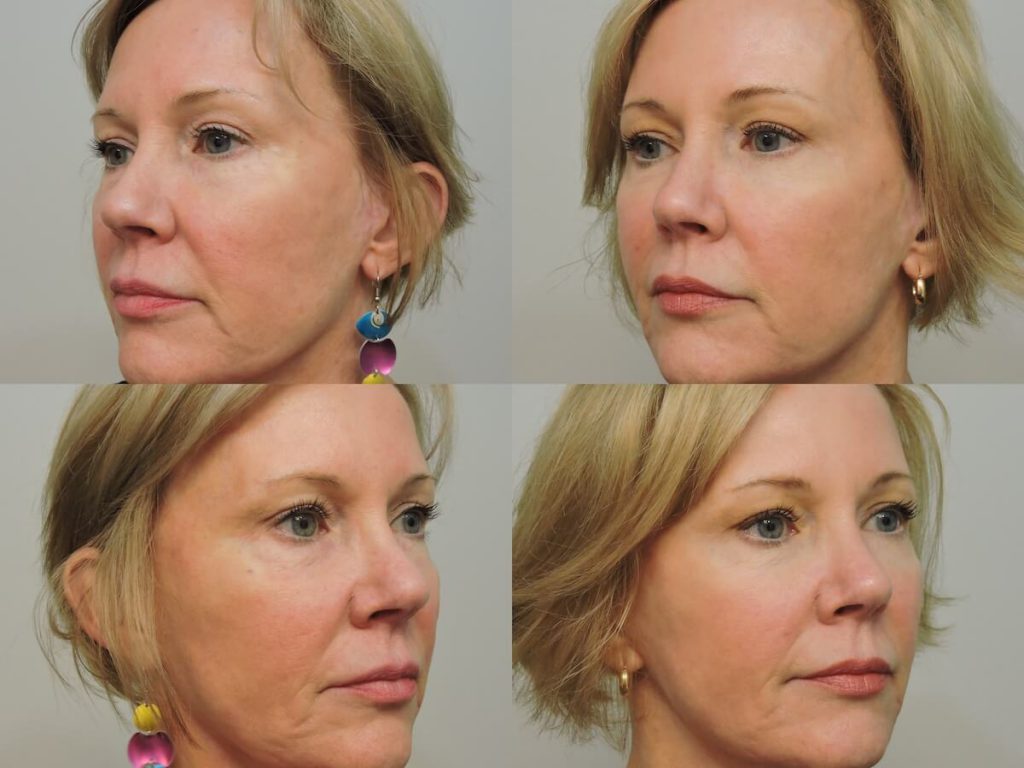Halo Pro

Over time, your skin can lose its youthful glow due to sun exposure and your body’s natural aging process. As a result, your body may develop sun spots, fine lines, and lose that natural healthy glow. Previous lasers couldn’t effectively remove this damage, because the treatment was either too shallow or too deep. Halo eliminates years of damage by precisely targeting the right depth. Halo restores the luminous glow you had when you were younger.
Get that Glow with Halo
- Customizable treatment to precisely target skin damage
- Improvement in the appearance of tone, texture, fine lines* and wrinkles
- Reduces pore size and increases reflectivity and glow
- Flexibility in treatment levels and downtime
*only with Halo Hybrid treatments
Your Treatment
Everyone’s skin is different. Everyone’s needs are different. Halo allows your clinician to customize your treatment to fit your lifestyle. Need to be back at work tomorrow? A light treatment creates smooth, vibrant skin that’s ready for makeup the next day. Want to WOW them? A more intense treatment will give your skin that youthful glow with just a few days of downtime.
Great Results with Minimal Downtime
In the past, you had to choose between a procedure that offered really great results but required a lengthy recovery, or a procedure with a fast recovery but marginal results. Now with Halo you get the best of both worlds: great results with minimal downtime. Halo combines deep dermal rejuvenation with epidermal renewal for a combined synergistic effect you can’t get with any other treatment. Halo creates beautiful results without the downtime of more aggressive treatments.
What happens during the treatment?
Thirty minutes to an hour before the treatment your clinician may place a topical anesthetic on your skin to reduce the sensation during the procedure. The area will be measured with motion tracking technology to ensure the area is treated evenly. The clinician will treat each measured section by uniformly rolling the Halo handpiece over the skin until the system recognizes the treatment is complete.
What does Halo feel like?
With a topical anesthetic and integrated cooling technology, most patients experience very little discomfort. Most patients describe the treatment as a feeling of heat with occasional prickling sensations, but are generally comfortable. After the treatment, most patients will continue to feel warm for an additional 15 to 30 minutes, or a bit longer with deeper treatment levels.
How soon after my treatment can I return to normal activities?
For the first 24 hours you should keep your skin protected according to your clinician’s instructions, but after that you should be able to go about your normal activities. After the first 24 hours your skin will begin to peel, but you will be able to put on makeup. For a facial treatment, you will see very little change on the first day. After two to three days you will develop a light bronzing appearance. By day three or four your skin will peel, revealing your new skin beneath.
When will I see results?
You will see initial results between two and five days after your Halo treatment, but your skin will continue to improve over time. Most patients see the greatest pigmentary improvement in the first two to three weeks. This is followed by a dermal regeneration phase that continues to improve for months.
How long will my results last?
Your Halo results will last for years to come, but you should continue to keep your skin protected at all times using UV sunscreen to protect your new, healthy skin. Each additional Halo treatment you get will only improve the results, giving you even better looking skin.
Before and After Halo Pro





